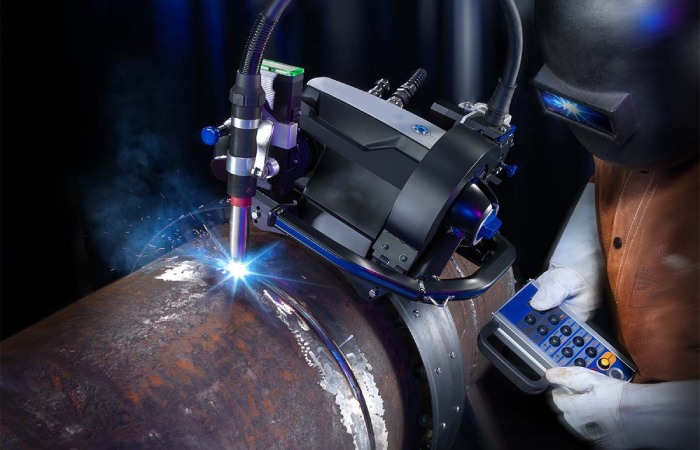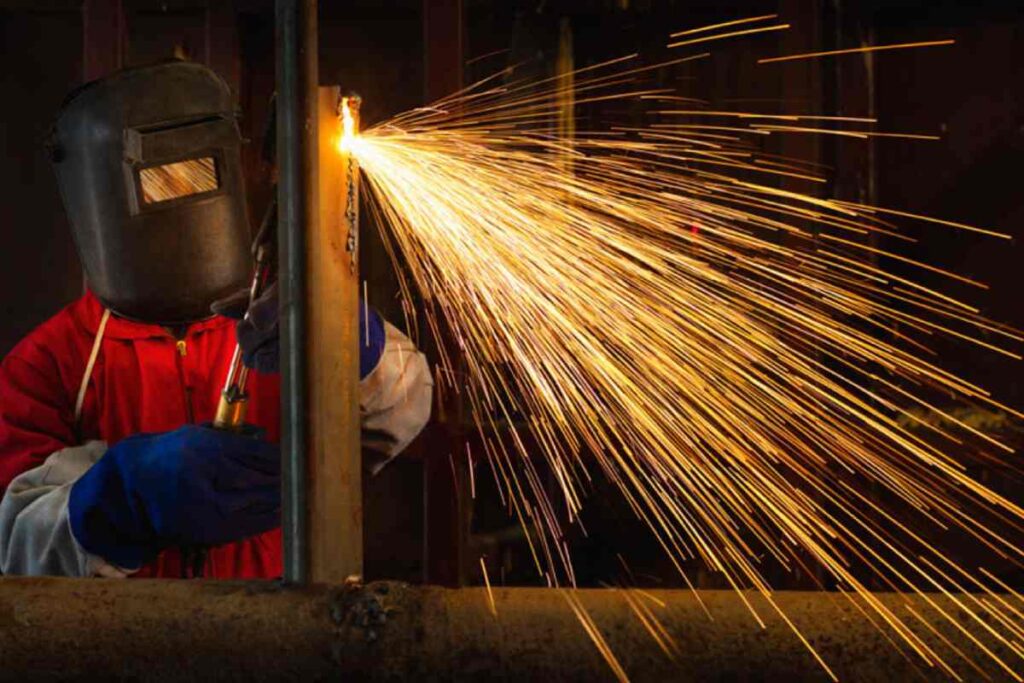Carbon steel pipe is strong, durable, and cost-effective. It is used in many industries, such as manufacturing and energy. Brazing this tubing is a particular skill. Proper strategies are required to create solid and safe welds. This guide covers carbon steel tubing welding, popular methods, and best practices. Using premium tubing such as HXSCO carbon steel tubing provides excellent results in many applications.
Why Choose Carbon Steel for Pipes?

Carbon metal is a combination of iron and carbon. It is strong, durable, and affordable. Carbon metal is resistant to pressure and can withstand it well. It can also withstand high temperatures, making it ideal for pipelines under challenging conditions.
This is why carbon metal pipes are so widely used:
- Strength: Carbon metal has high tensile strength, making it deformation-resistant.
- Heat resistance: It remains significantly lower than high temperatures and is ideal for industries with extreme temperatures.
- Cost-benefit ratio: Carbon metal has a meagre cost compared to other metals, making it ideal for large-scale applications.
Essential Welding Techniques for Carbon Steel Pipes

Welding carbon steel pipes requires precision and pleasure. It is also necessary to know the correct welding methods for this material. The most common methods for welding carbon steel pipes are listed below:
Shielded Metal Arc Welding (SMAW)
Shielded metal arc welding, commonly known as resistance welding, is one of the most well-known methods of welding carbon metals. It involves using a flux-coated electrode to create a gas shield along the weld.
Advantages of SMAW:
- Versatility: SMAW is suitable for various welding positions, including vertical, horizontal and overhead.
- Economical: The equipment required for SMAW is particularly economical and easy to transport.
- Efficient in harsh conditions: This method can be used outdoors, even in windy conditions, since the flux coating protects the solder pool.
Disadvantages of SMAW:
- Slower process: Submerged arc welding (SMAW) can be slower than other welding methods.
- Higher skill requirements: More advanced skills are required to achieve consistent results.
Gas Tungsten Arc Welding (GTAW)
Gas Tungsten Arc Welding. GTAW or TIG welding uses a Wolfram electrode to perform the welding. This method produces excellent welds. However, it is also slower than other methods.
Advantages of GTAW:
- High–quality welds: TIG welding produces exceptionally light welds with minimal spatter.
- Ideal for thin materials: Very suitable for thinner carbon steel pipes.
- Precision: Ideal for projects that require meticulous and specific work.
Disadvantages of GTAW:
- Slower and more expensive: GTAW is slower and requires more luxurious equipment.
- Higher skill level: TIG welding requires extensive training and excellent knowledge of materials.
Gas Metal Arc Welding (GMAW)
Gas Metal Arc Welding: GMAW, or MIG welding, is a semi-computerized system in which a wire electrode is suckled through a welding gun, creating an arc that joins metal parts.
Advantages of GMAW:
- High efficiency: MIG welding is fast and environmentally friendly, ideal for large-scale projects.
- Easy to learn: GMAW is relatively easy to analyze, making it a popular choice for many welders.
- Minimal cleanup: The process produces much less slag, making post-weld cleanup quicker.
Disadvantages of GMAW:
- Less effective outdoors: The shielding gas may need to be changed in windy conditions.
- Lower accuracy: It is not as specific as TIG welding, which can disadvantage precision work.
Flux-Cored Arc Welding (FCAW)
Submerged Arc Welding (FCAW) is similar to MIG welding. However, it uses a flux-filled flux-cored wire. This method is suitable for welding thick carbon metal pipes and can be used outdoors.
Advantages of FCAW:
- Suitable for thick materials: Ideal for welding thick carbon metal pipes.
- Suitable for outdoor welding: The flux center provides additional protection in windy conditions.
- High productivity: FCAW is fast and environmentally friendly for essential projects.
Disadvantages of FCAW:
- Slag formation: FCAW produces slag that requires cleaning.
- Higher equipment costs: Wire and equipment are more expensive than other strategies.
Essential Factors in Carbon Steel Pipe Welding
Many factors must be considered when welding carbon metal pipes to ensure solid and reliable welds.
Preheating and Post-Weld Heat Treatment
Preheating carbon steel pipes, especially thick ones, helps reduce the risk of cracking. The preheating procedure heats the metal slowly, ensuring uniform heat distribution. On the other hand, post-weld heat treatment helps relieve residual weld pressure, which can improve the overall durability of the weld.
Controlling Welding Speed
Welding speed is essential because it affects both the fineness and strength of the weld. Higher welding speeds can also result in insufficient penetration, while lower speeds can cause excessive heat. Maintaining a constant speed is essential to achieving a balanced weld.
Choosing the Right Welding Technique
Selecting the correct welding method is critical. It depends on the application’s needs, such as material thickness, environment, and budget. Using the proper technique will significantly affect the strength and durability of the final product. Suitable for HXSCO carbon steel pipe or any other leading grade of pipe.
Proper Filler Metal Selection
The filler metal used in welding must match the properties of the carbon steel pipe to ensure a cohesive joint. Selecting the appropriate filler steel is essential to ensure welding power, especially in high-pressure applications.
Advantages of Using Carbon Steel Pipes in Welding
Carbon steel pipes have many advantages for welding. They are known in many industries.
- High durability: Carbon steel’s strength is ideal for high-stress applications like pipelines.
- Availability: Carbon steel is less expensive than chrome steel. This makes it best for large projects.
- Versatility: Carbon steel can withstand numerous welding methods, allowing for manufacturing and installation flexibility.
These advantages make carbon steel an excellent choice for many commercial programs. However, it is imperative to work with reliable suppliers. It is crucial to choose the proper carbon steel manufacturer. The suitable fine-grain materials meet commercial standards and help create strong and durable welds.
Best Practices for Carbon Steel Pipe Welding
Achieving high-quality welds on carbon steel pipes requires careful planning, precision, and high quality.
- Proper preparation: Ensure pipe surfaces are clean, contaminant-free, and adequately prepared before welding.
- Temperature control: Preheating and maintaining higher temperatures will help prevent cracks and structure distortion.
- Practice and skill development: Welding carbon steel pipes requires skill. Complex strategies, such as TIG welding, require more care. Invest in proper training and exercises to develop knowledge of these strategies.
- Regular inspection: Perform daily inspections and checks to identify weld problems. This can be critical to essential initiatives.
Conclusion
Welding carbon steel pipe requires exceptional skills. It involves selecting the proper welding method, controlling the temperature, and adjusting the speed. Whether using HXSCO carbon steel pipe or any other grade of pipe, understanding these steps is critical to creating excellent welds.
Carbon steel is affordable, durable, and versatile. This makes it ideal for welded pipes in construction, oil and gas, and manufacturing industries. Choosing the proper carbon steel manufacturer is essential to obtaining high-quality materials. Learning these welding skills and maintaining high standards will ensure your projects’ safety, reliability, and longevity.

